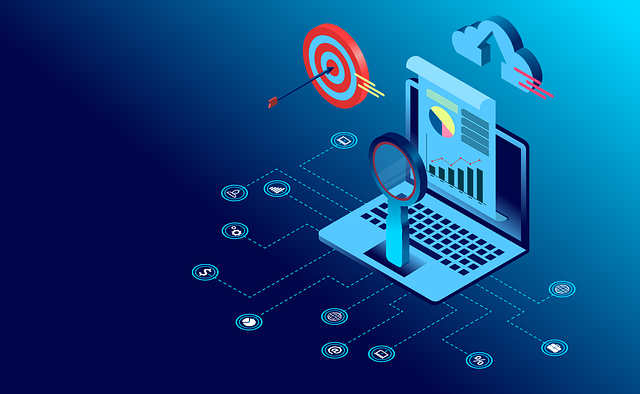Sales has changed irrevocably over the past two years. In addition to the necessity for remote and hybrid working
instigated by the pandemic, advances in technology offer tools to help reps be more productive. However, these
advances have also increased clients’ expectations for high-quality digital customer experiences from B2B
sales such as personalisation. These trends are behind these five key challenges for sales teams as we go into 2022.
- Adapting to a Remote / Hybrid Sales Model
According to the Gartner Future of Sales 2025 Report,
80% of interactions between sales teams and B2B buyers will happen in digital spaces.41% of sales leaders
say their customers now want to communicate digitally more and 38% that their customers want to buy online.
While people having adjusted to working remotely during the pandemic has definitely been a major influence
on this trend, the preference for digital also has much to do with a generational shift in attitude which is
becoming apparent in today’s workforce.
Millennials who now make up around 50% of the workforce watched the birth and growth of the Internet and the
advent of smart phones and social media. A recent Forbes
Report emphasised the importance Millennials place on tech tools, finding that "93 percent of
millennials polled cited modern and up-to-date technology as one of the most important aspects of a
workplace.’ Millennials tech savviness can also benefit employers as they are naturals at collecting
and interpreting information on conversions and customer engagement.
The switch of preference from in person to digital means sales teams and B2B buyers will look to negotiate
deals, sign contracts, and send payments all in one digital environment. This includes digital sales rooms -
where sales teams and buyers can come together to negotiate, collaborate, and close in real-time.

- Social Selling
When Covid made it impossible to take clients out to dinner or network with potential prospects at an event,
savvy sales people turned to client relationship building through their social media profiles. 74% of
seller’s state they’ll be aiming to expand their social media presence and LinkedIn network in
2021, and you can expect that to continue in 2022.
LinkedIn particularly is a great way to identify leads, conduct outreach, and build client relationships in a
friendly and interactive way that email simply cannot match. 31% of B2B professionals say that social
selling has allowed them to build deeper relationships with clients.
It is easy to get talking by commenting on their post and establishing a relationship before hitting them
with a direct message. Taking a slow approach is most effective and when clients are ready to move into or
through the sales funnel, you’ve built a better understanding of them and their needs.
Social selling does require time and consistency. Building a presence and fostering relationships on LinkedIn
requires regular sharing, content posting, plus engaging with other people’s content. All of this
takes time and it can take a while before you start to see results.
However, the reason social selling has become popular is because it really works. According to LinkedIn, 80%
of B2B leads come from the platform.
- Embracing Tech
The increase of tech in sales reflects wider technology sales trends in 2022, such as automation’s
growing role in reducing the time spent on manual tasks or giving your reps more tools to drive efficiency
and productivity. These include guided selling tools which analyse customer data and uses AI to deliver
recommendations to help sales teams be more successful.
Today’s buyers also expect a more sophisticated digital customer experience. However, according to
LinkedIn research, sales professionals say their employers pose a barrier to improving the customer
experience, For example, only 39% of sales professionals say their sales organisation gives buyers easy
access to product reviews and just 43% of sales professionals say their organisation has an after-care or
retention team to ensure the customer stays engaged after the sale. These findings suggest B2B sales
organisations need to do more to offer buyers their desired tech developments, such as live chat where
product questions can be posed and answered on demand.

- Personalisation
Based on survey data of more than 400 buyers and 400 sellers, LinkedIn’s State of Sales Report 2021
found that one of the main ‘deal breakers’ for customers was sales reps ‘not understanding
my company and its needs’ (44%.)
This often stems from companies assuming what customers want, rather than gathering customer feedback. To
deliver effective solutions for customers and redesign processes to improve the customer experience,
companies must start with customer research.
Another method of gaining a better understanding of your customers is through analysing how customers behave
on your website and how they respond to communications like emails.
Try tracking which pages on your site they spent most time on and which calls-to-action they clicked on. Look
also at which types of communication they engaged with the most, and when. These strategies will give you a
useful insight into what interests individual customers and how and when to communicate with them in future.
Researching their company also means you can add personalised touches to communications.
These statistics from research by Forbes show just how much difference personalising customer communications
can make:
• 72% of consumers say they only engage with
personalised messaging.
• 66% of consumers say encountering content that
isn’t personalised would stop them from making a purchase.
• 80% of companies report seeing an uplift since
implementing personalisation.
If personalisation sounds like a lot of time and effort, automation and AI can be employed to reduce the
work, freeing your team up to focus on face-to-face tasks like negotiations.
- Value Based Selling
Value-based selling simply means focusing on communicating the value your product offers to meet a specific
customer’s needs.

As today’s customers often prefer to do their own research rather than speaking to a rep at the
consideration
phase, sales organizations have to change tactics to win customers who are sceptical of typical sales
tactics.
The aim of this approach is to provide the customer with just the right information at just the right point
in the
sales funnel so that they feel they are making an informed, independent decision.
To do this successfully, businesses must get to know their customer’s unique needs and pain points. As
with
personalisation, this data can be gathered from customer research and looking for clues from a
customer’s
interactions with communications.
Content can then be tailored to individual customer’s needs. Again, this may seem time consuming, but
as
customers become used to this type of personalisation in their daily lives it is becoming and expectation
for B2B
sales.